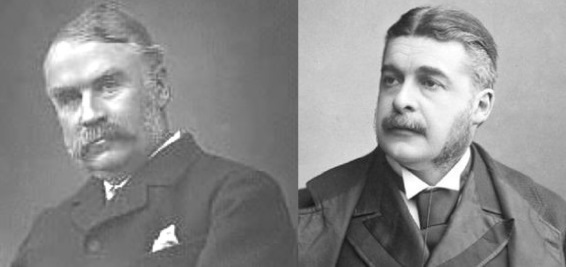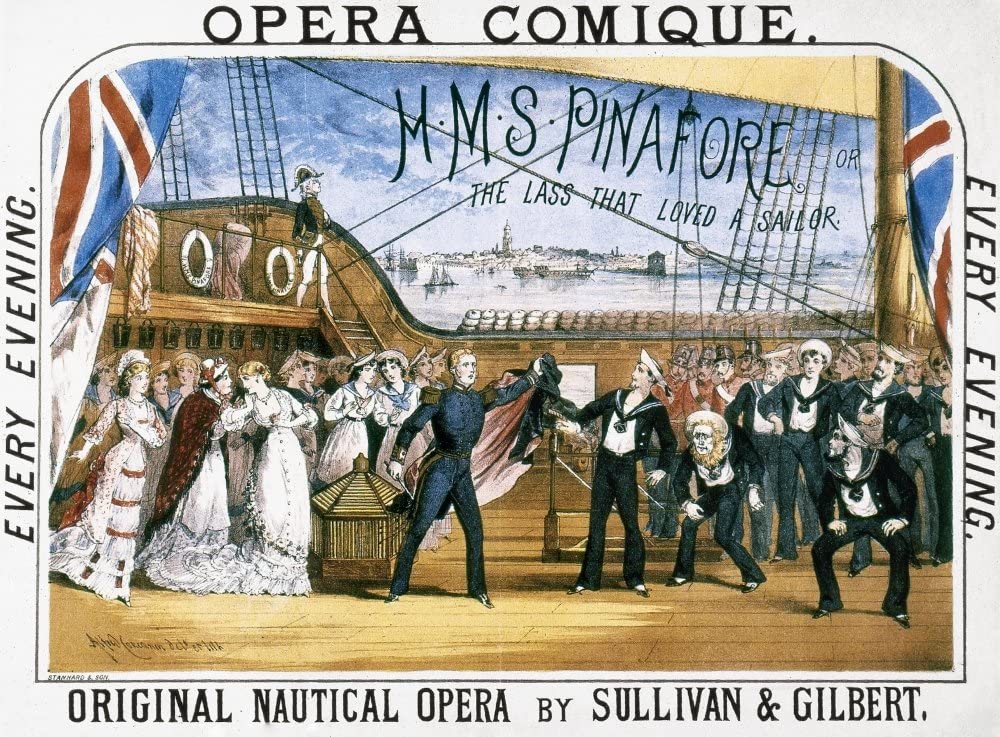Everyone has heard of the lovely Gilbert and Sullivan comic operas which are so widely performed throughout the English speaking world by amateur operatic companies, schools and grand opera houses, not to mention popular excerpts being constantly broadcast on radio. Of the fourteen comic operas they wrote together their most famous works are probably Trial by Jury, The Mikado, HMS Pinafore and The Pirates of Penzance. The witty libretti by W S Gilbert and the beautiful tuneful music by Arthur Sullivan have entertained the English speaking world since their creation in late Victorian times.
Both Gilbert and Sullivan were Freemasons and this lecture looks at their masonic and non-masonic careers briefly, together with their most enduring works, the Gilbert and Sullivan comic operas. What is not generally known is how much is owed to Freemasonry for the existence of these operas.
SIR WILLIAM SCHWENK GILBERT 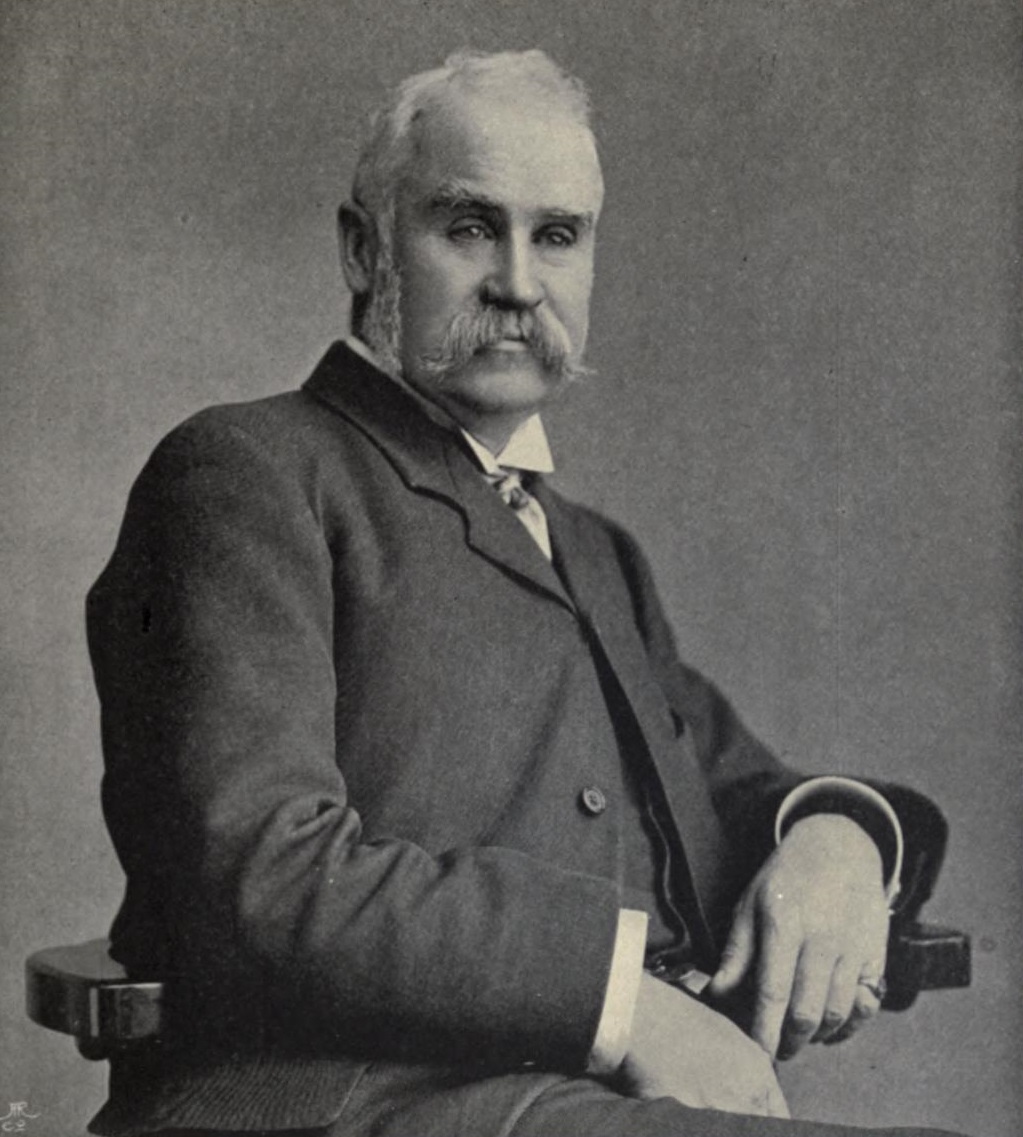
Sir William Schwenk Gilbert’s Life
Sir Wm Gilbert was born in London in 1836, the son of a naval surgeon turned novel and short story writer, some of which were illustrated by his talented son. Gilbert’s parents were distant and stern, quarrelling increasingly before the marriage broke up. After schooling, he graduated from King’s College, London, and then went into the Civil Service, which he hated; at the same period, to relieve his boredom, he served in the militia part time. With a fortunate family bequest he was able to escape the Civil Service, and take up, what turned out to be an unsuccessful career as a barrister; he only had 5 clients a year.
Gilbert’s Authorship
What the law lost out on, the literary world gained. With hardly any clients as a barrister, he needed to supplement his income; so he wrote a variety of stories, comic rants and theatre reviews, as well as drawing grotesque illustrations. He was also sent as a newspaper correspondent to France in 1870 to cover the Franco-Prussian War. At that time his humorous Bab Ballads, which he illustrated himself, became very popular.
“Bab” was his childhood nickname.
Gilbert as Playwright
Gilbert became a leading playwright, critic, humorist and satirist. He wrote 75 plays, pantomimes and opera burlesques, some of which were very popular in their day; but the theatre is a transient world. He directed many of the plays himself, demanding strict discipline from the players. He sought realism in acting, even though the plot may have been absurd. Gilbert’s witty plays and lyrics inspired many other writers such as Oscar Wilde, George Bernard Shaw, Noel Coward and Flanders and Swann.
Gilbert’s Later Life
Gilbert married Kitty Turner in 1867, who was 11 years his junior. They had no children, but they had a veritable menagerie at home, including monkeys, lemurs and a fawn, in addition to the more usual domestic pets. They entertained lavishly at Grim’s Dyke on Harrow Weald, which is a large and beautiful Arts and Craft house designed by Norman Shaw. It is now a hotel, and I have been there many times to G & S related functions. In terms of earnings I suppose that Gilbert and Sullivan were the equivalent of the Andrew Lloyd Webber of their day.
Gilbert’s death in 1911 was a drama in itself. He loved children and was teaching two teenage girls to swim in his lake at home. When one of the children got into difficulties he dived in to save her, and died of a heart attack in the middle of the lake.
Gilbert’s Personality
What sort of personality was Gilbert? Although known to be sometimes prickly, gruff and disagreeable, it was only his manner; underneath it all he was extraordinarily kind to those in trouble, and courteous and amiable to those that knew him. He delighted in amusing children and making them laugh.
SIR ARTHUR SEYMOUR SULLIVAN
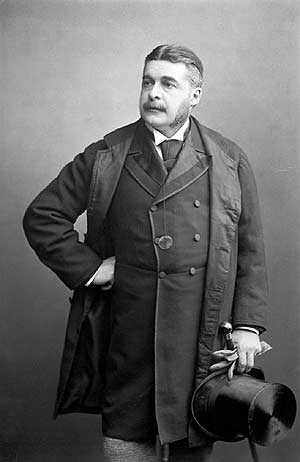
Sullivan’s Early Life
Sir Arthur Seymour Sullivan was born in Lambeth in 1842. His father, of Irish birth, was a military bandmaster, clarinetist and music teacher. In 1854 Arthur Sullivan joined the choir of the Chapel Royal , and two years later at the age of 14 he was awarded a scholarship at the Royal Academy of Music. In his third year he studied in Leipzig as a Mendelssohn Scholar. After returning to London his incidental music to Shakespeare’s The Tempest caused a sensation, and he began building a reputation as England’s most promising young composer by composing a series of ambitious works, including oratorios, operas, a symphony and a cello concerto. To make more money he also wrote hymns and parlour songs.
Sullivan’s Later Life
Sullivan never married, but he had several serious love affairs, and had a roving eye. He proposed marriage on one occasion, but was turned down. His mega earnings allowed him to lead a high lifestyle, often staying on the Continent, and mixing in artistic or high society circles.
Sullivan’s health, was never robust. He died from heart failure in 1900 aged only 58. By order of the Queen, with whom he was a favourite, he was buried in St Paul’s Cathedral.
A monument to him featuring a weeping muse in the form of a naked woman was erected on the Victoria Embankment; there is a surrealistic photograph of a number of ladies dressed in elaborate crinolines and hats standing next to the naked muse. It is not far from Gilbert’s monument on the Embankment. Gilbert would have loved the absurdity of it.
Sullivan’s Personality
Gilbert and Sullivan were very different in character as instead of the irascible and rapier wit of Gilbert, Sullivan was gentle and likeable, and very popular with all ranks of society, including royalty.
SULLIVAN’S MASONIC CAREER

Lodge of Harmony No 255
Sullivan was initiated in the Lodge of Harmony 255 on 11th April 1865, passed on 3rd October of that year, and raised on 30th January 1866. As the minute books for the period have been lost we do not know who proposed him, or whether he took office, but we have two recorded attendances for March 1869 and January 1870. The lodge largely recruited from the armed forces at that time, and met at the Greyhound Inn in Richmond.
The Lodge of Harmony is the oldest lodge in the Province of Middlesex. It was founded in 1785 by Thomas Dunckerley, who dubiously claimed to be a natural son of King George II, and was such a leading character in the blossoming of Freemasonry in the 18th Century.
Introduction to Gilbert by Frederic Clay
As a result of further research it is a matter of fascinating conjecture as to what role the Lodge of Harmony might have played in bringing Gilbert and Sullivan together, without which lodge none of their comic operas may have existed.
My connection and interest stems from the fact that my father attended the lodge’s meeting in 1937, held to celebrate the issue of a commemorative book on its history, which my father bought. By chance some years later a friend and former associate conductor of the D’Oyly Carte Opera Company, David Mackie, was visiting us whilst I had the book out to peruse. David is an authority on Sullivan, and has written a book on him, as well as having conducted the Royal Philharmonic Orchestra and a choir of 500 at the Albert Hall to commemorate the centenary of Sullivan’s death in the year 2000.
Knowing this, I pointed out the entry in the list of members relating to Sullivan’s
initiation, which I thought would interest him.
David immediately noticed that the preceding entry was a co-initiate on the same day as Sullivan; Frederic Emes Clay, described as a Treasury Clerk. David pointed out that Clay was a gifted composer in addition to being a Treasury Clerk, his best known piece being the song I’ll Sing Thee Songs of Araby. He also set to music a number of Gilbert’s libretti, among them Princess Toto and Ages Ago. I am sure that all these numbers are well known to you.
Clay moved in high circles; he was the son of James Clay, MP, and it is perhaps in this social context that he met Sullivan, for we also know from a letter Sullivan wrote in November 1862 that they knew each other before they were initiated. They may also have known each other from the time that they were both choristers in the Chapel Royal.
The most significant point is that during the run of Ages Ago in 1869, four years after having been initiated, Clay introduced Sullivan to Gilbert. Perhaps knowing Clay and Sullivan were Freemasons might have been an influence on Gilbert. Clay appears to have remained one of Sullivan’s closest friends, and incidentally, it was Sullivan who wrote the entry on Clay for Grove’s famous Dictionary of Music and Musicians. I believe Freemasons can be proud of the role that they played in bringing the two together as a catalyst for the creation of the splendid G & S operas.
Arthur Sullivan Lodge No 2156
In June 1886 the Arthur Sullivan Lodge No 2156 was consecrated in Manchester; the lodge is now sadly closed. At the consecration Provincial brethren processed to the tune of a Processional March composed by Sullivan; the march being played by instrumentalists augmented by members of the Sir Charles Hallé orchestra. Sullivan was elected an honorary member at the meeting. He was not present, and never attended the lodge, but wrote previously saying how flattered he was to have a lodge called after his name, but due to ill health and pressing engagements he was not able to take on any duties and attend personally.
Grand Organist
Sullivan’s reputation as a composer was such that he was invited to become Grand Organist in 1887. It was not necessary to have gone through the Master’s chair for that role at that time. He performed only once in that office, which was just after his appointment at a very special meeting of Grand Lodge held at the Royal Albert Hall for the Golden Jubilee of Queen Victoria on 13th June 1887. There is a letter from Sullivan to another organist stating that if he was asked to play at the Diamond Jubilee in 1897, because of the importance of the occasion he would be bound to accept, but he was not sure whether he was in the running. It transpired that he did not play at the event. The reason is not recorded; it may have been due to his ill health by that time.
Studholme Lodge No 1591
Sullivan later joined Studholme Lodge No 1591 in 1896, and remained a member until his death 4 years later, although never taking any office in the lodge. It was a lodge full of establishment figures; later Bro Winston Churchill was initiated into that lodge.
GILBERT’S MASONIC CAREER

Craft Scotland
W S Gilbert was initiated on 12th June 1871 in St Machar Lodge No 54 in Aberdeen. He was passed and raised on 23rd June 1871; ceremonies were scheduled quickly in those days.
Gilbert was then a Captain in the Royal Aberdeen Militia, and there was a strong
connection in the lodge with that local militia. St Machar Lodge is a very ancient lodge; although the charter is dated in 1763 the lodge was known be in existence at least 400 years before that, but the records are lost. It was associated with St Machar’s Cathedral in Aberdeen, and was reputed to emanate from the operative masons who built the cathedral. Gilbert never held office in the lodge before he left Scotland.
Craft London
After Gilbert moved back to London he joined Bayard Lodge No 1615 in June 1876. It was the third meeting of the lodge which had been consecrated the previous month; the membership consisted of many military brethren, as well as many without a profession described as gentlemen; there were always plenty in that category in those days before death duties reduced their ranks. It was named after the Chevalier de Bayard, the Dauphin of France in the 15th Century; he was considered a perfect knight and the flower of chivalry. The meetings were held at the Masonic Hall in Golden Square, followed by dinner at the Café Royal. There was an Aberdeenshire connection amongst the founders, one of which was the Provincial Grand Master of Aberdeenshire East. That connection was no doubt why Gilbert joined.
OTHER MASONIC ORDERS JOINTLY
Royal Arch
Both Sullivan and Gilbert were exalted into the Royal Arch in London in Friends in Council Chapter No 1383; Gilbert in February 1877, and Sullivan just after in July that year. Sullivan resigned in 1881. Gilbert’s membership ceased at an unknown date as the records of the chapter were lost after it closed.
Rose Croix
Both Sullivan and Gilbert were perfected in Bayard Rose Croix Chapter No 71 in London in 1876, which was the chapter connected to Gilbert’s Craft lodge. Gilbert resigned in 1881, but Sullivan remained as Organist for some years.
MASONIC INVOLVEMENTS
General Comments
With regards to Gilbert and Sullivan’s masonic careers, both cannot be said to have been terribly active, although Sullivan was more so than Gilbert as he remained a member of Studholme Lodge until his death. Neither of them occupied a Chair of any lodge.
Gilbert was proposed into the Garrick Club in 1906 by Sir Edward Letchworth, the Grand Secretary, but his active freemasonry appears to have finished long before that date.
There are no masonic references written by Gilbert into any of the operas, although there is a reference to a password in the last of the operas they worked on, The Grand Duke. The password was “A sausage roll.”
Sullivan composed no specific masonic music, although he wrote the lyrics of Onward Brother Masons, which he set to his tune for Onward Christian Soldiers. Incidentally, the latter hymn has been adopted as a favourite Knights Templar hymn.
THE GILBERT & SULLIVAN’S COMIC OPERAS
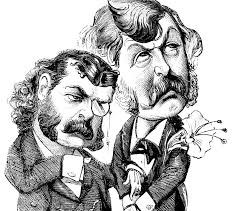 Because the nub of the fame of both Gilbert and Sullivan lies with the splendid comic operas they wrote together we now look at these in detail. In all Sullivan wrote 24 operas, 11 full orchestral works, 10 choral works and oratorios, 2 ballets, 70 hymns and 80 songs.
Because the nub of the fame of both Gilbert and Sullivan lies with the splendid comic operas they wrote together we now look at these in detail. In all Sullivan wrote 24 operas, 11 full orchestral works, 10 choral works and oratorios, 2 ballets, 70 hymns and 80 songs.
Although some of the hymns such as Onward Christian Soldiers, and songs such as The Lost Chord, are still popular, most of his compositions outside the G & S repertoire are performed more as curiosities, or by dedicated G & S buffs.
The first collaboration of Gilbert and Sullivan was Thespis in 1871, of which the music has been lost, but I have seen it performed adapted to Sullivan’s other music.
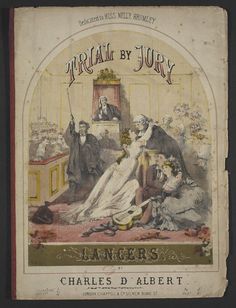 The first really enduring work of the collaboration came some years later. It was Trial by Jury, commissioned as a short filler opera by Richard D’Oyly Carte, a manager of a small theatre whose subsequent D’Oyly Carte Opera Company was to become a continued leading factor in creating the fame of the operas over the next 110 years. Trial had all the essence of the subsequent hits; the witty irreverent words of Gilbert, and the very tuneful light music of Sullivan. In Trial Gilbert takes his revenge on the law as an unsuccessful practitioner of it by mercilessly ridiculing the judge and the lawyers.
The first really enduring work of the collaboration came some years later. It was Trial by Jury, commissioned as a short filler opera by Richard D’Oyly Carte, a manager of a small theatre whose subsequent D’Oyly Carte Opera Company was to become a continued leading factor in creating the fame of the operas over the next 110 years. Trial had all the essence of the subsequent hits; the witty irreverent words of Gilbert, and the very tuneful light music of Sullivan. In Trial Gilbert takes his revenge on the law as an unsuccessful practitioner of it by mercilessly ridiculing the judge and the lawyers.
Because Gilbert’s initial career was as an unsuccessful barrister many of the operas betray his frustration with the profession. As a result of recent research by Andrew Goodman it has been found that much of Gilbert’s legal practice was centred on the Sessions House at Clerkenwell; until recently a masonic centre. There was thus a lost opportunity of performing Trial by Jury in what would have been the most authentic setting.
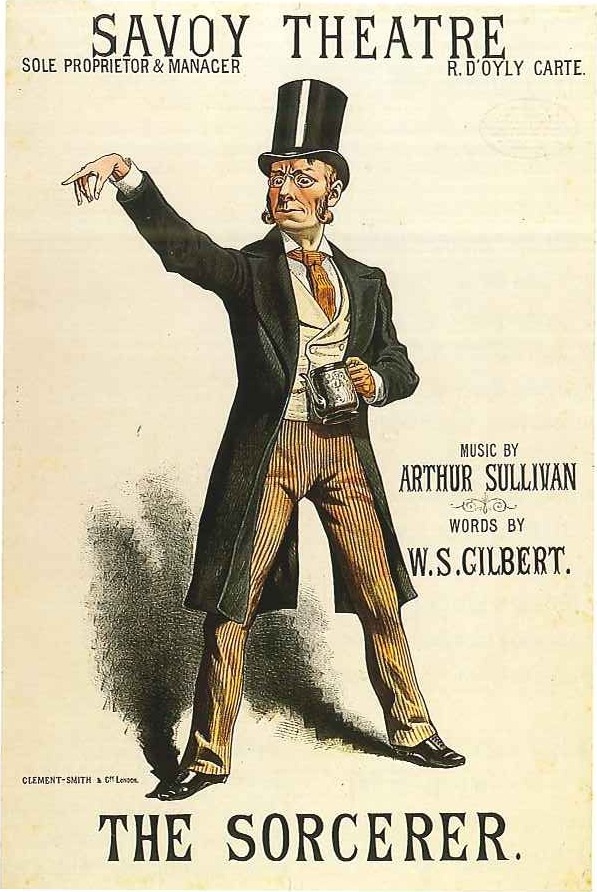 The Sorcerer was the next opera, but it was only a modest success. It is a jolly piece that I have played in twice; there is a hilarious scene with a magic love potion when everyone who is single is sent to sleep after taking it, and wakes up falling in love with and proposing to the first single opposite number, which leads to absurd and amusing consequences.
The Sorcerer was the next opera, but it was only a modest success. It is a jolly piece that I have played in twice; there is a hilarious scene with a magic love potion when everyone who is single is sent to sleep after taking it, and wakes up falling in love with and proposing to the first single opposite number, which leads to absurd and amusing consequences.
The third collaboration was HMS Pinafore in 1878, which became a red-hot favourite with 571 performances in London; it was then the second longest run in theatrical history.
It turned the G & S operas into an international phenomenon. In all his operas Gilbert could not help making fun of the Establishment; in the case of Pinafore it was the First Lord of the Admiralty because the holder of the office at that time was the stationer Mr W H Smith, and who had never been to sea.
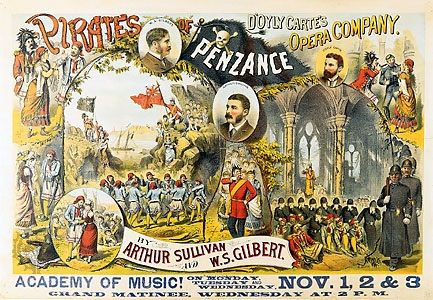 The profits from Pinafore enabled D’Oyly Carte to build the Savoy Theatre to house the future London productions, which led to them being known as The Savoy Operas. He later made enough money to build the Savoy Hotel next door, where all the suites were named after different operas; that is until recently when some Middle Eastern hotel company decided to denude the hotel of its history; philistines!
The profits from Pinafore enabled D’Oyly Carte to build the Savoy Theatre to house the future London productions, which led to them being known as The Savoy Operas. He later made enough money to build the Savoy Hotel next door, where all the suites were named after different operas; that is until recently when some Middle Eastern hotel company decided to denude the hotel of its history; philistines!
In The Pirates of Penzance the Police were the main target of Gilbert’s satire. It had a very long run, and has remained as one of the most popular of the operas.
Patience followed after that. That opera makes fun of the Aesthetic Movement, with one of the leading characters very much based on Oscar Wilde; he wears a large lily in his buttonhole.
Iolanthe was the next real success. It lampooned both the House of Lords and Commons, with an absurd plot including a chorus of peers and of fairies. Apparently Queen Victoria was not amused; she adored her House of Lords.
The subsequent opera was Princess Ida, which was never such a big hit, but it is a
delightful three act opera making fun of the early Women’s Lib Movement.
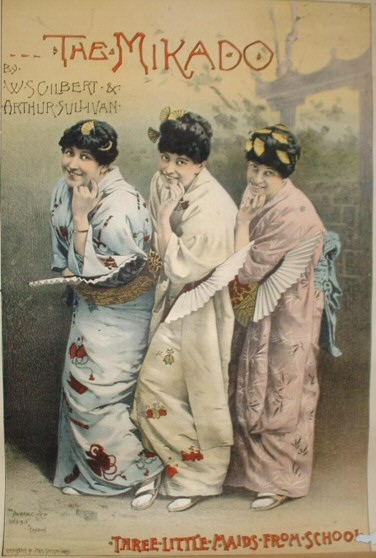 The Mikado came next; it was their greatest success with an incredibly long run. It still remains the most popular of their operas. The idea was suggested to Gilbert by the big exhibition of Japanese art held in London at that time. Another spurious version which Gilbert promoted was that he got the idea from a Samurai sword falling off the wall in his drawing room. I myself have performed the role of Pooh-Bah three times in that show.
The Mikado came next; it was their greatest success with an incredibly long run. It still remains the most popular of their operas. The idea was suggested to Gilbert by the big exhibition of Japanese art held in London at that time. Another spurious version which Gilbert promoted was that he got the idea from a Samurai sword falling off the wall in his drawing room. I myself have performed the role of Pooh-Bah three times in that show.
He was the Lord High Everything Else, and is a somewhat pompous character. Some some scurrilous friends have said that I do not have to act the part. Perhaps it was very good training for my role as Assistant Provincial Grand Master.
Ruddigore followed, which was never so popular, but has great moments with ancestral portraits coming to life to haunt a bad baronet. In a production of the show that I took part in the producer made the ghosts Hammer House of Horrors characters; I was a werewolf; I never got the howl right. The bad baronet was Frankenstein’s Monster, going around frightening the villagers. A chorus lady who had upset the director was told to stay on stage, and when the monster sees her he runs off in fright.
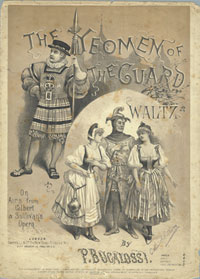 The next success was The Yeomen of the Guard set in the Tower of London. Usually the characters in G & S shows end up neatly paired off; this was the exception as the jester collapses at the end broken hearted after having been jilted. Unlike most grand operas where there are numerous stabbings, executions, and ladies dying of consumption at full vocal volume, the G & S world is a very different jolly one.
The next success was The Yeomen of the Guard set in the Tower of London. Usually the characters in G & S shows end up neatly paired off; this was the exception as the jester collapses at the end broken hearted after having been jilted. Unlike most grand operas where there are numerous stabbings, executions, and ladies dying of consumption at full vocal volume, the G & S world is a very different jolly one.
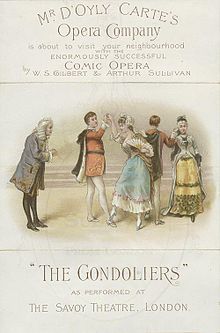 The final popular opera was The Gondoliers, a scintillation piece set in Venice with a tale of mixed up babies; a frequent twist in many operas. During the run of The Gondoliers there was a serious rift between Gilbert, Carte and Sullivan as a result of the infamous Carpet Quarrel. It was very petty as it only involved a few pounds, whereas the shows were taking in millions of pounds in current day money.
The final popular opera was The Gondoliers, a scintillation piece set in Venice with a tale of mixed up babies; a frequent twist in many operas. During the run of The Gondoliers there was a serious rift between Gilbert, Carte and Sullivan as a result of the infamous Carpet Quarrel. It was very petty as it only involved a few pounds, whereas the shows were taking in millions of pounds in current day money.
The reason was because Carte had taken the expense of a new carpet at the Savoy Theatre out of show profits, and Gilbert objected. Gilbert went to law, and he won.
Utopia Limited & The Grand Duke
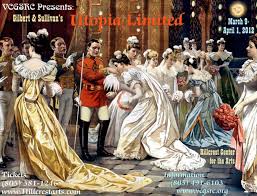 After many failed attempts they were eventually reconciled, and two more operas resulted: Utopia Limited and The Grand Duke. They were both failures. Gilbert’s plot for The Grand Duke was very convoluted; he was trying to be too clever. After these failures they never worked together again, but Sullivan was ill anyway with only four more years to live.
After many failed attempts they were eventually reconciled, and two more operas resulted: Utopia Limited and The Grand Duke. They were both failures. Gilbert’s plot for The Grand Duke was very convoluted; he was trying to be too clever. After these failures they never worked together again, but Sullivan was ill anyway with only four more years to live.
Conclusion
In conclusion, the very special skills of Gilbert and Sullivan in their Savoy Operas had definitely elevated the comic opera genre to an art form on its own, which had many influences on subsequent shows up to the present day.
By courtesy of Paul Higgins PSGD,APGM, member of The Temple of Athene Lodge of Research
- Influencia de la Masonería en Chile - April 29, 2024
- Pomegranate in Freemasonry – its significance - March 11, 2024
- Inns and Innkeepers’ incidence in Freemasonry expansion - February 28, 2024

